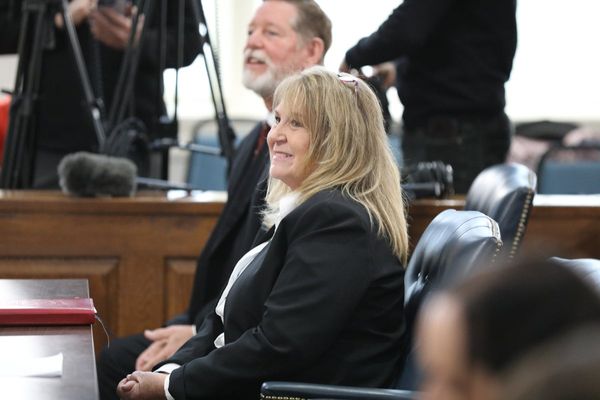As an emerging taxidermist in the '90s, Stevan Green had become adept at preserving deer heads and pheasants when he was approached with his most challenging task yet — a cat.
"It was a woman and she loved it. She had [the stuffed cat] sitting in her lounge beside the fire," Stevan says.
In the 20 years since, Stevan has undertaken a range of animals for different clientele including snakes, birds, echidnas and a platypus — but very few pets.
That was until he started his first formal taxidermy business with partner Tamara Vlaanderen in Woolumbool in South Australia's south-east late last year.
Soon after, a woman from Adelaide reached out to South East Taxidermy with a request to have her dog immortalised.
"We didn't start out saying we were going to do pets, it's just evolved," Tamara says.
There are only a handful of taxidermists in Australia and fewer willing to do people's cats and dogs.
"Some people may go crook because we had to skin a dog. But it's not that easy to do. You've sort of got to put that behind you," Stevan says.
"It's someone's pet and that's what they want.
The challenge of taking on pets
Lovers of dogs themselves, Tamara and Stevan don't take any joy out of preparing pets but feel an obligation to those wanting the option.
They've just taken on a request to tan a horse.
"It's not something you choose to do everyday," Tamara says.
The process is similar to any other animal and takes Stevan and Tamara six to eight months to complete.
"It's got to be skinned, salted, and then sort of hung up to dry for a few days. And then washed and pickled and tanned. And then you start the mounting process," Tamara says.
While some taxidermists won't do pets on moral grounds, the technical elements can be more intense for a dog.
The art and science of taxidermy
Whether it's a dog or a deer, taxidermy is intricate work and requires a meticulous eye for detail.
It involves art, chemistry, model making, construction, anatomy, and has historically attracted hunters.
Growing up on farms in the midlands of Tasmania, Stevan was taught to hunt out of necessity.
"Dad would give us our own paddocks and we'd have to go and snare possums and that's how we made a bit of money for ourselves."
His appreciation for animals grew when he made his first deer head in 1986, with the help of an older taxidermist.
"It gave me a bigger interest to go and study more, their features and what they do," Stevan says.
He's recorded hundreds of hours of video of deer feeding and fawns playing.
Tamara's introduction to taxidermy is much more recent.
Soon after moving from New Zealand to Tasmania in 2012 she met Stevan while working on a dairy farm.
"He got me into shooting and then it just really grew from there," Tamara says.
"I had to start doing the birds for him because he started to get a few [deer head orders] in."
She was hooked.
Business is good
The scene has changed a lot since Stevan first entered it about 40 years ago.
"Back then it was only jackaroos on farms and we were making no money at all," Stevan says.
"And then I did a few mates' [animals]. It started as a hobby and just got bigger and bigger.
Nowadays Stevan and Tamara are looking to buy a third freezer to help store the orders coming through, all word of mouth.
The same demand is being felt everywhere according to secretary of the Australian Association of Wildlife Artists Rudi Anton.
"It's a thriving market, it really is," he says.
The industry, like many others, is facing a shortage of materials that is seriously impacting workflow.
"We were always going to have a few per cent increase [in price] every year, but it's gone up exponentially. Up to 40 per cent increase in some items," Rudi says.
Taxidermists like Tamara and Stevan rely on most of their products coming from American suppliers, especially for products like tanning solutions, paints and artificial plants for arrangements.
"We can't get glass at the moment, it's a real problem," Rudi says.
Still, the extra stresses are worth it for Tamara and Stevan.
Working in the very early hours of the morning to balance some part-time farm work, Stevan is happy to commit more time to what he loves.







